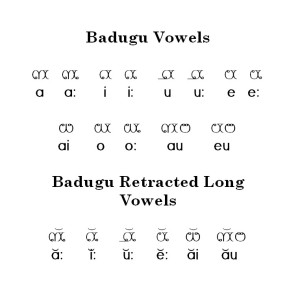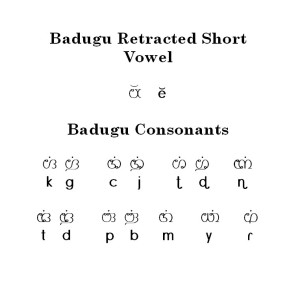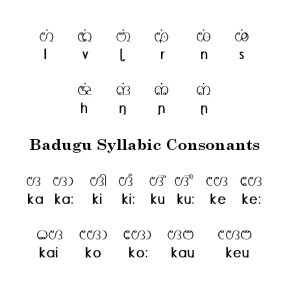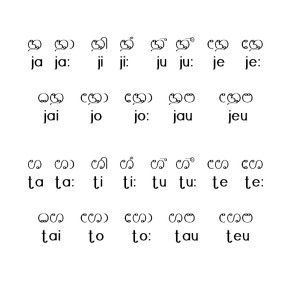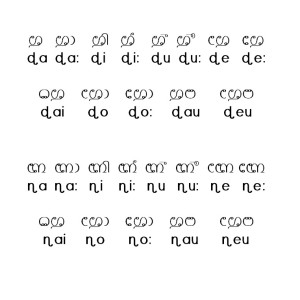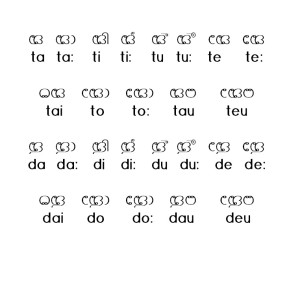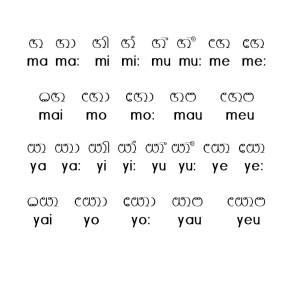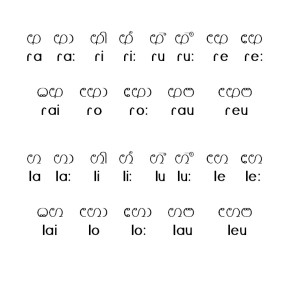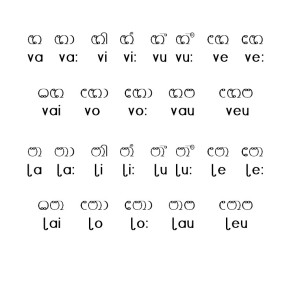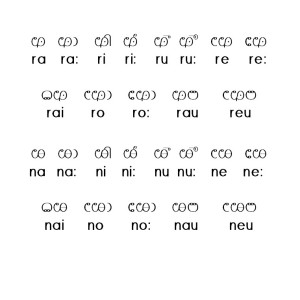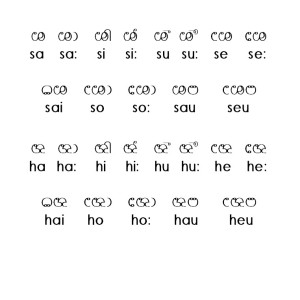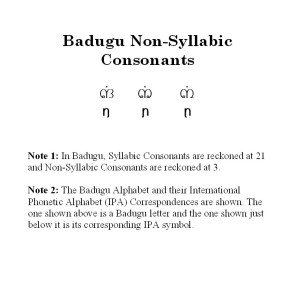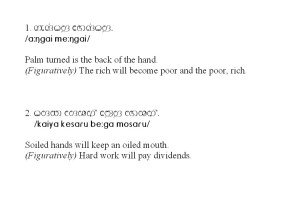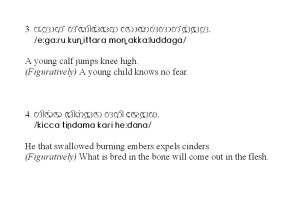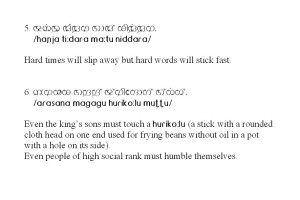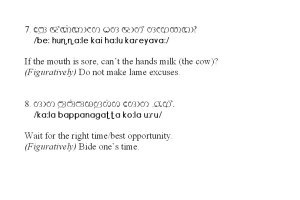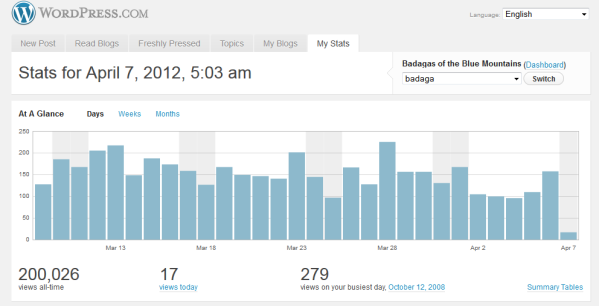This is a work of Late Thyagi. K.P.Raju Gowder of KADASOLAI Village who was Author of the local Nilgiri magazine called "ARAAICH [
Araachi?]" in which he had published 13 issues.
The Badaga community, like several communities of India is formed of different Clans(KOLA) affiliated to different Totems.
The various clans and their totems are as follows:
1. Forefathers of Solur Group - NAGA (COBRA)
2. Forefathers of Thoodagur Group - ANEY (ELEPHANT)
3. Forefathers of Doddur Group - MARI (GODDESS MARI)
4. Forefathers of Sinnakunnur - Kethi - Kundha Group - KASTURI (MUSK DEER)
5. Forefathers of Hebbanadu - Halhattane - Thangadu Group - MANIKKA (CARBUNCLE STONE)
Forefathers of Meekeri - Ithalar - Balakola Group - MANIKKA (CARBUNCLE STONE)
Forefathers of Horanally - Porthy Group - MANIKKA (CARBUNCLE STONE)
Forefathers of Bembatti - Belida Group - MANIKKA (CARBUNCLE STONE)
Forefathers of Kasoley-Mandhanai Group - MANIKKA (CARBUNCLE STONE)
Forefathers of Jakkanarai Group - MANIKKA (CARBUNCLE STONE)
Forefathers of Kateri Ajjur Group - MANIKKA (CARBUNCLE STONE)
6. Forefathers of Adhikari Group - KOVERU (WHITE HORSE)
7. Forefathers of Kagguchchi- Jagadala Group - BELLIE (SILVER)
8. Forefathers of Pannemanai-Kenduva Group - SELANDI (SPIDER)
9. Forefathers of Porangadu Group - MADHUVA (HONEY BEE).
Each clan is exogamous, i.e., man belonging to one clan cannot marry the girls of the same clans as they are the descendants from the same ancestors. Men of one clan can marry girls of different clans affiliated to different totem.
Direct words from from his piece -
"It is claimed that the main merkunadu group,viz, the Hebanad-Halatanai-Thangadu group and the Jakkanarai group are descended from the same forefather. The Late A.N. Kadagowder, former Moniagar of Merkunad, Denad Village and the Late.M.Doddayya Gowder of Halattanai informed the author (Late.Thyagi.K.P.Raju Gowder) that the forefather of the Jakkanarai group of the Badagas was uterine brother of Huliajja, Guruajja and Haraajja, the forefathers of the main group of the merkunad people. The Jakkanarai forefather Batti Hettappa joined the Porangadu forefathers at Thalaimalai and accompanied them to Betalada where he married Yelingi Amma, the sister of 7 forefathers of Porangadu people. The above informants asserted that they belong to the MANIKA CLAN."
NAGA KOLAHatti’s founded by Solur Group Forefathers
Village Name Nearest Point
1. Soluru Solur
2. Bekodey Solur
3. Kotatti Solur
4. Bikkekandi Solur
5. Hosahatti Solur
6. Thalemaley Solur
7. Hakkosu Solur
8. Addakorey Solur
9. Devala Devala
ANEY KOLAHatti’s Of Thoodagur Group Forefathers
Village Name Nearest Point
1. Hullathi Hullathi
2. Karepalli Hullathi
3. Meluru Hullathi
4. Kavaratti Hullathi
5. Yekoni Hullathi
6. Kadasoley Hullathi
7. Malekotey Hullathi
8. Athigallu Hullathi
9. Kilinjimora Hullathi
10. Nanjanadu Nanjanad
11. Kuruthugui Nanjanad
12. Kallakorey Ithalar
13. Morakutti Hebbanad
14. Nerimora Hebbanad
15. Bandumi Jagadala
16. Kukallu Kukal
17. Yediyuru Kukal
18. Kukalthorey Kukal
19. Nerikambey Kukal
20. Seegehola Kukal
21. Degili Kukal
22. Uyilhatti Kukal
23. Kurumidi Kukal
24. Kotada Hassanur Melseeme
25. Hosahatti Hassanur Melseeme
26. Attapadi Hassanur Melseeme
27. Seegehatti Hassanur Melseeme
28. Punajuru Chamarajnagar Taluk
MARI KOLA
MARI KOLAHatti’s of DODDUR Group Forefathers
Village Name Nearest Point
1. Kadanadu Kadanad
2. Davaney Kadanad
3. Benthatti Kadanad
4. Kokudalu Kadanad
5. Nandahatti Kadanad
6. Jakkaluru Kadanad
7. Havarey Hullathi
8. Mel Kauhatti Nanjanad
9. Kil Kauhatti Nanjanad
10. Thuneri Thuneri
11. Baragallu Thuneri
12. Hannikorey Thuneri
13. Mragallu Thuneri
14. Thorehatti Thuneri
15. Ulupatti Thuneri
16. Ooramaley Thuneri
17. Karegallu Hebbanad
18. Kodumudi Keeyatti Hebbanad
19. Iduhatti Hebbanad
20. Mainaley Thummanatti
21. Madithorey Thummanatti
22. Kundesoppey Thummanatti
23. Thummanatti Thummanatti
24. Kendorey Thummanatti
25. Kappachi Thummanatti
26. Thummanda Thummanatti
27. Kambhatti Thummanatti
28. Billikambey Kagguchchi
29. Kethorey Kethi
30. Jakkalhodey Jakkanarai
31. Nidugula Keeyatti Nidugula
32. Kurukathi Nidugula
33. Kadekodu Nidugula
34. Pandaluru Pandalur
KASTURI KOLAHatti’s of Sinnakunur-Ketti-Kundah Forefathers.
Village Name Nearest Point
1. Sinnakunnur Kadanad
2. Baramannu Kadanad
3. Konagatti Kadanad
4. Malligorey Kadanad
5. Nellimandu Thuneri
6. Nattakallu Kotagiri
7. Porore Ketti
8. Mokkatti Ketti
9. Kerkandi Ketti
10. Kekkatti Ketti
11. Yellanhalli Ketti
12. Hulhada Ketti
13. Ketti Oor Ketti
14. Achanagallu Ketti
15. Manepattu Ketti
16. Melhatti Ketti
17. Kammandu Ketti
18. Kerehada Ketti
19. Soregundu Ketti
20. Theedehatti Ketti
21. Dimbhatti Kotagiri
22. Naregiri Nidugula
23. Kanneri Nidugula
24. Thalorey Naduhatti
25. Kethikeri Jakkanarai
26. Selave Jakkanarai
27. Bungalada Jakkanarai
28. Mudiyakambe Jakkanarai
29. Thumburu Jakkanarai
30. Melkundah Melkundah
31. Attumannu Melkundah
32. Hosahatti Kinnakore
33. Keeyakundah Keeyakundah
34. Thuneri Keeyakundah
35. Manikal Keeyakundah
36. Bakorey Keeyakundah
37. Mattakandi Keeyakundah
38. Manjuru Keeyakundah
39. Kariamaley Keeyakundah
40. Kechigatti Keeyakundah
41. Bikkatti Bikkatti
42. Hosahatti Bikkatti
43. Kerapadu Bikkatti
44. Yedakadu Bikkatti
45. Naduhatti Bikkatti
46. Sundatti Bikkatti
47. Mukkimaley Bikkatti
48. Mulligur Mulligur
49. Mullimalai Mulligur
50. Gaikandi Mulligur
51. Gundunai Mulligur
52. Kunjanarey Mulligur
53. Masikandi Balakola
54. Baigehada Balakola
55. Kavasapadi Attapadi
56. Hosuru Attapadi
57. Ummathapadi Attapadi
58. Pattanakallu Attapadi
59. Soonagadde Attapadi
60. Agali Attapadi
MANIKA KOLAHatti’s of Hebbanadu-Halhattane-Thangadu Group Forefathers
Village Name Nearest Point
1. Hebbanadu Hebbanadu
2. Kengamudi Hebbanadu
3. Kallimora Hebbanadu
4. Hosahatti Hebbanadu
5. Mel-Kodumudi Hebbanadu
6. Murutuva Hebbanadu
7. Meluru Melur
8. Hosahatti Melur
9. Naihatti Melur
10. Halhattane Melur
11. Bengal Balakola
12. Kothiben Balakola
13. Kokalhada Balakola
14. Denadu Balakola
15. Mainaley Balakola
16. Nunduva Balakola
17. Thangadu Balakola
18. Halakorey Balakola
19. Arehatti Balakola
20. Manihatti Balakola
21. Karigalbey Ithalar
22. Pudugatti Ithalar
23. Mel-Koderi Adigaratti
24. Karimorahatti Hubbathalai
25. Ottimorahosahatti Ketti
26. Thattaneri Solur
27. Bikkatti Hullathi
28. Kalinganatti Kagguchi
29. Kattabettu-Hosatti Jagadala
30. Kodamalai-Hosatti Burliar
31. Honnorey Naduhatti(Kattabettu)
32. Gathugui Kotagiri
33. Benthatti Kotagiri
34. Kottanhalli Nidugula
35. Nandahatti Gudalur
36. Soladi Nelliyala
37. Odemandu Melseeme-Hassanur
Hatti’s of Meekeri-Ithalar-Balakola Group Forefathers (MANIKA KOLA)Village Name Nearest Point
1. Meekeri Balakola
2. Balakola Balakola
3. Mudugula Balakola
4. Kanneri Balakola
5. Ithalar Ithalar
6. Happukodu Ithalar
7. Thoodaley Ithalar
8. Umarkandi Ithalar
9. Bikkol Adigaratti
10. Baigemandu Ketti
11. Kavilorey Kadanad
Hatti’s of Harnai-Porthi group Forefathers (MANIKA KOLA)Village Name Nearest Point
1. Horanally Balakola
2. Attuboilu Ithalar
3. Porthi Ithalar
4. Hosa Attuboilu Ithalar
5. Bingasagallu Nanjanad
Hatti’s of Bembatti- Belda Group Forefathers (MANIKA KOLA)Village Name Nearest Point
1. Bembatti Ithalar
2. Belda Ithalar
Hatti’s of Kasoley-Mandhaney Group Forefathers (MANIKA KOLA)Village Name Nearest Point
1. Kasoley Adigaratti
2. Mandhaney Balakola
3. Godalhatt Adigaratti
4. Sakkalhatti Ketti
Hatti’s of Jakkanarai Group Forefathers (MANIKA KOLA)Village Name Nearest Point
1. Jakkanarai Jakkanarai
2. Aravenu Jakkanarai
3. Kallada Jakkanarai
4. Thinniyuru Jakkanarai
5. Odenu Nidugula
6. Dabbakambe Konakeri
7. Beragani Hosahatti Nidugula
Hatti’s of Kateri-Ajjur Group Forefathers (MANIKA KOLA)Village Name Nearest Point
1. Kateri Adigaratti
2. Naduhatti Adigaratti
3. Thoorhatti Adigaratti
4. Ajjuru Kagguchchi
5. Jeenatti Kagguchchi
6. Nadu Ore Kagguchchi
KOVERU KOLAHatti’s of Adhikari group Forefather’s
Village Name Nearest Point
1. Adhigaratti Adigaratti
2. Anehatti Adigaratti
3. Muttinadu Adigaratti
4. Oranalli(Katery) Adigaratti
5. Harahatti Melur
6. Manjakambey Balakola
7. Sogethorey Ketti
8. Dodhanni Ketti
9. Kothanghatti Ketti
10. Halhada Ketti
BELLI KOLAHatti’s of Kagguchchi-Jagadala Group Forefathers
Village Name Nearest Point
1. Kagguchchi Kagguchchi
2. T.Manihatti Kagguchchi
3. Honnathaley Kagguchchi
4. Jagadala Jagadala
5. Berhatti Jagadala
6. Malligorai Jagadala
7. Karekorey Jagadala
8. Honnamudi Jagadala
9. Manjidala Jagadala
10. Mel-Bikkatti Jagadala
11. Kil-Bikkatti Jagadala
12. Thambhatti Adigaratti
13. Nidugula Nadukeri Nidugula
SELANDI KOLAHatti’s of Pannemane-Kenduva Group Forefathers
Village Name Nearest Point
1. Pannemanai Hulikal
2. Hulikallu Hulikal
3. Kenduva Hulikal
4. Denaley Ketti
5. Kandibikkey KilKundha
MADHUVA KOLAHatti’s of Porangadu group Forefathers
Village Name Nearest Point
1. Beragani Porangadu
2. Jakkakambe Porangadu
3. Sundatti Porangadu
4. Selakorae Porangadu
5. Kavilore Porangadu
6. Miliden Porangadu
7. Kerkambe Porangadu
8. Thanthanadu Porangadu
9. Horasoley Porangadu
10. Gundhada Porangadu
11. Pudiyangi Porangadu
12. Maralakambe Porangadu
13. Bhattakore Porangadu
14. Harakambe Porangadu
15. Hanehatti Porangadu
16. Keeye Hanehatti Porangadu
17. Kannerimukku Porangadu
18. Haiyuru(Aiyooru) Porangadu
19. Samaldittu Porangadu
20. Kadekambatti Porangadu
21. Kechchigatti Porangadu
22. Kunnu Attu Porangadu
23. Kerbetta Porangadu
24. Betalhada Porangadu
25. Gadugu Battagore Porangadu
26. Pedduva Porangadu
27. Kalhatti Porangadu
28. Byangi Porangadu
29. Addavale Porangadu
30. Kerben Porangadu
31. Pudumandu Porangadu
32. Irupugallu Porangadu
33. Thothamokke Porangadu
34. Kattabettu Porangadu
35. Thogalhatti Porangadu
36. Naduhatti Porangadu
37. Bettatti Porangadu
38. Ellithorai Porangadu
39. Yedapalli Porangadu
40. Halakarai Porangadu
41. Kodamalai Porangadu
42. Hubbathalai Porangadu
43. Koderi Adigaratti
44. Kinnakorai Kinnakorai
45. Hiriyaseegai Kinnakorai
46. Kengal Kadanad
47. Mothakambe Kadanad
48. Barlhatti Thummanhatti
49. Morigallu Thummanhatti
50. Kendore-Kodamalai Thummanhatti
51. Bikkemorahatti Kagguchchi
52. Bettatti Jakkanarai
Perhaps the above work of Late Thyagi. KP Raju Gowder was inspired from Late MK Bellie Gowder of Achanakall Village who enumerated the houses of all the clans/kola of the community in 1932.[It may be pointed out here that Prof.Paul Hockings who has done a lot of work on Badagas has mentioned Mr.MK Bellie Gowder in his works/books. It is claimed that the original manuscript of Bellie Gowder is now with Prof.Paul Hockings. Is it so Prof? - Wg Cdr JP]



